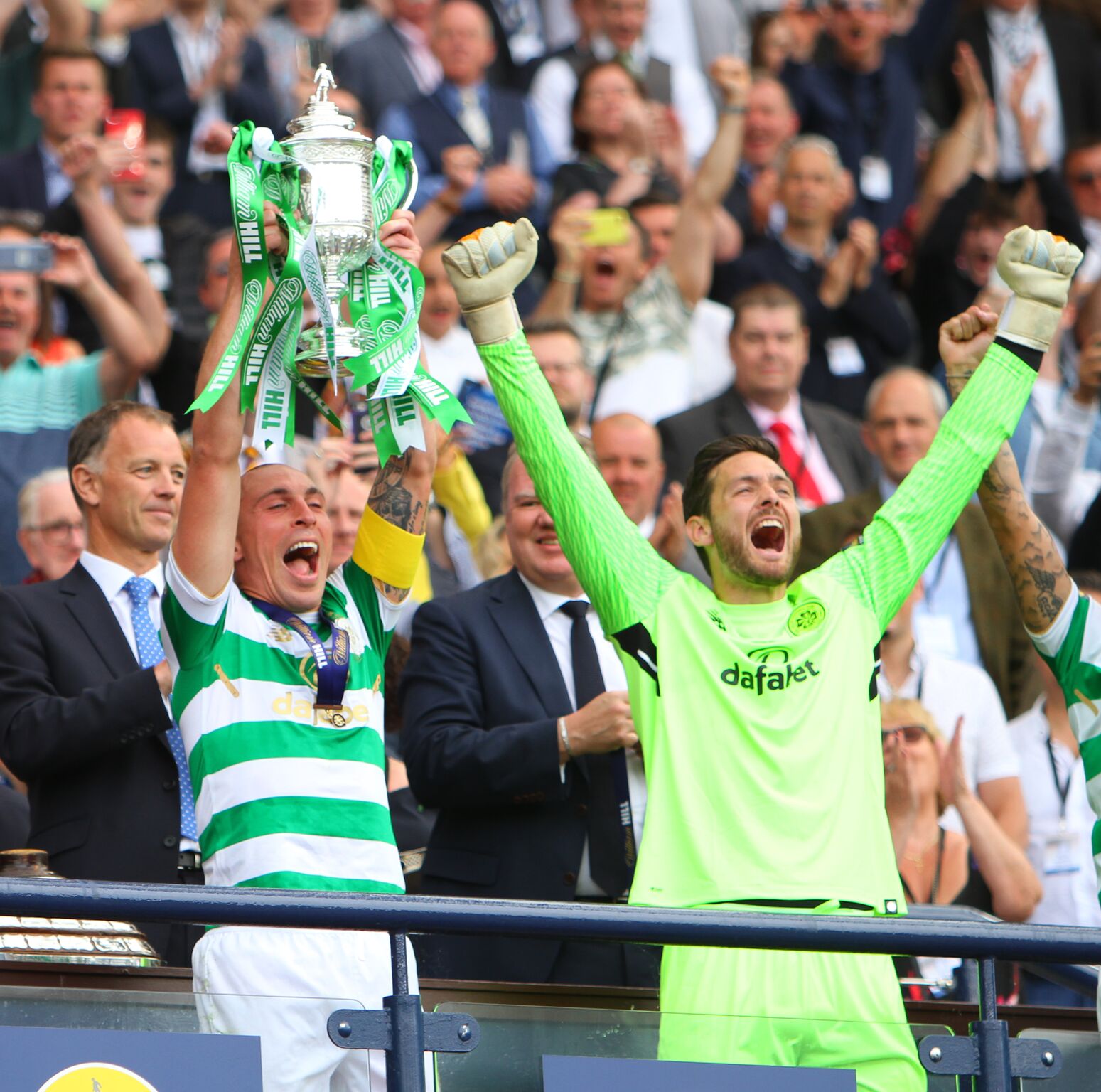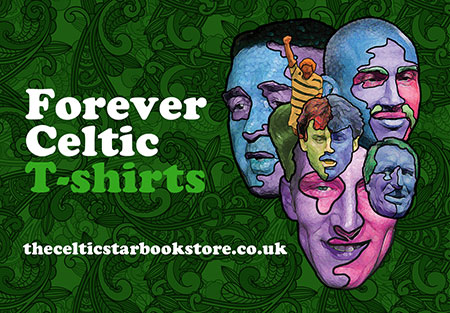Someone asked me on Saturday night through an alcoholic haze how highly I rated Scott Brown as a player and captain in a historical context. My immediate answer was very highly indeed, and possibly just a little short of Billy McNeill but certainly able to be mentioned in the same breath as the great Caesar.
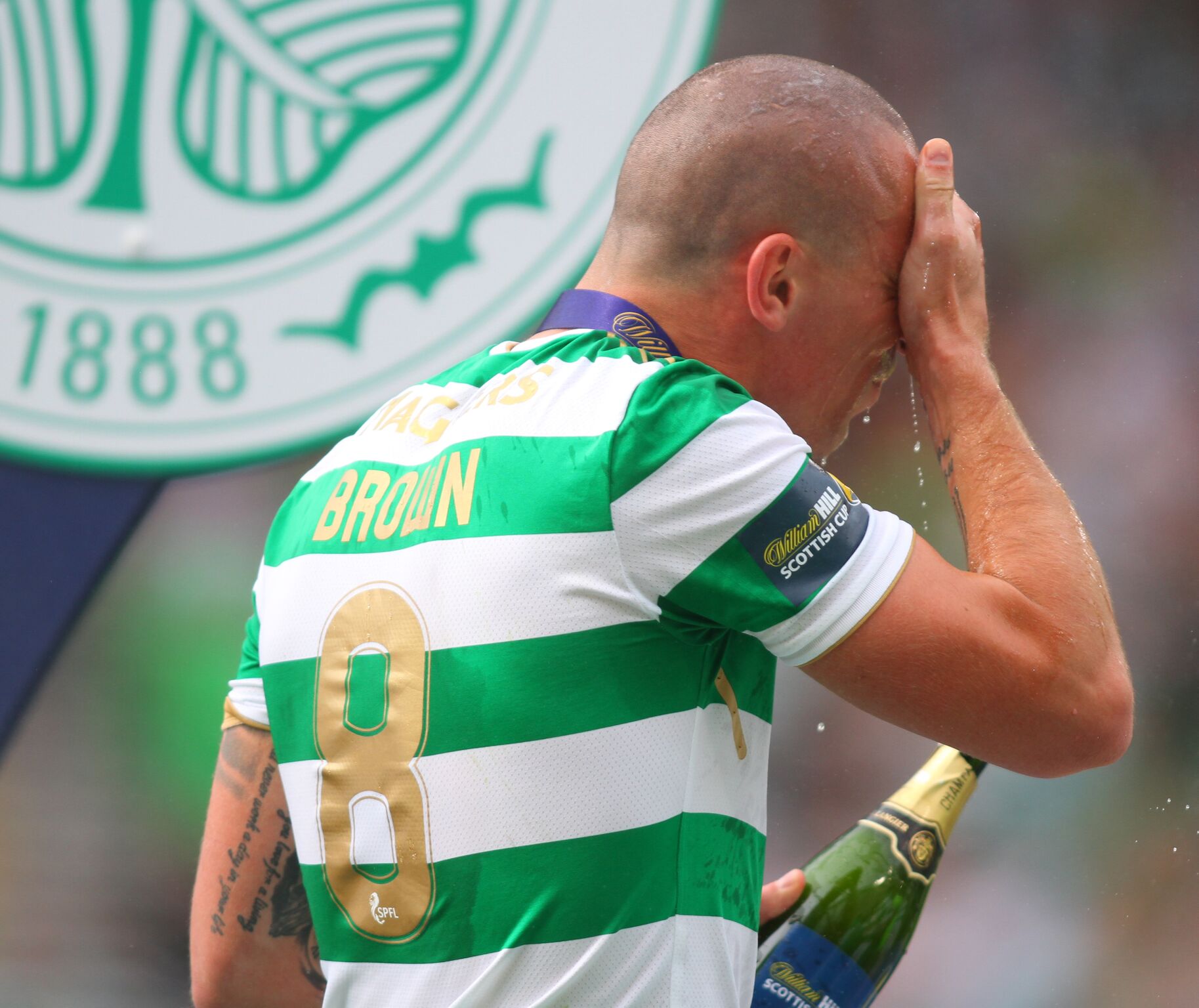
The more I thought about it, though, the more I came up with an almost exact parallel in the great Sunny Jim Young of 100 years ago. Sunny, like Broony, was not a Celtic supporter by background but very soon became committed to the ethos and traditions of the club, became loved by the support, and like Scott, led the club to great glory. In Sunny’s case, he led the club from November 1915 until April 1917 without losing a game. Although Sunny was out injured from September 1916, his presence was there to see his beloved Celts through, and his stentorian war cry of “Face the ball, Celts” was never far away.
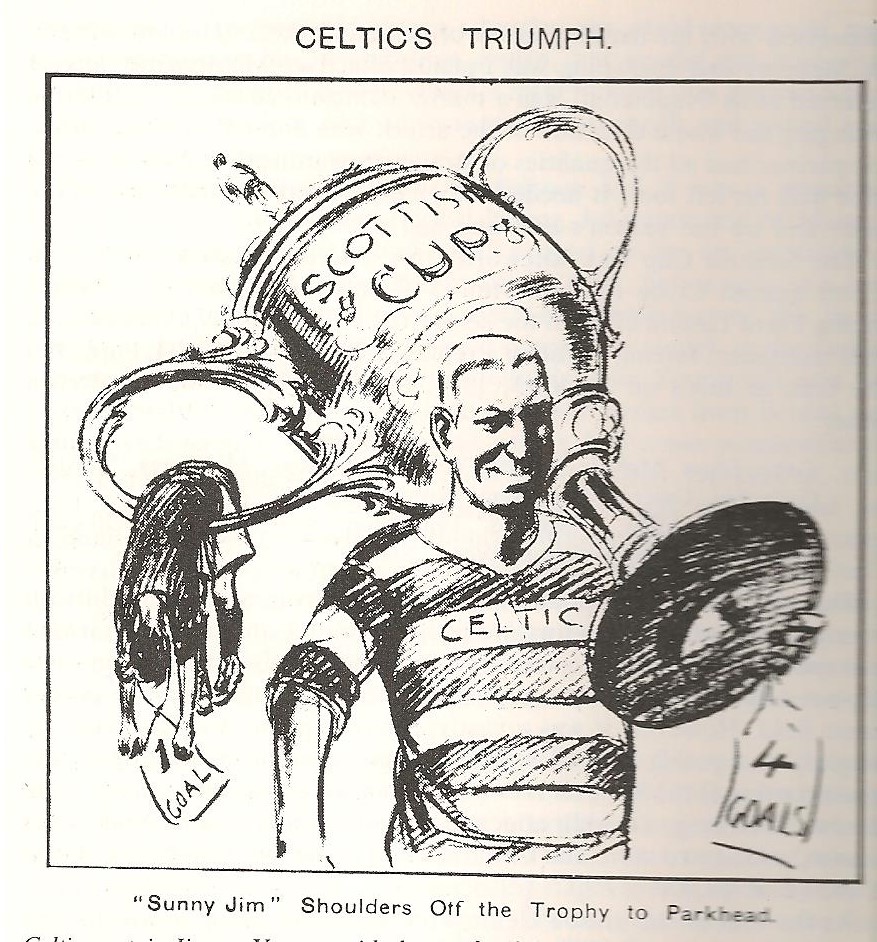
Sunny joined the club from Bristol Rovers in 1903 originally as a centre half, but it was at right half that he made his name through his drive and hard work. Like Broonie, he would do anything for the club and was never afraid to be unpopular with referees or opponents. Several suspensions hindered his cause now and again, and he was often roundly booed by opposition crowds but always came through at the end, the final whistle often signalling the revolutionary change in his face from being stern, grim, determined and tough to the serene smile that earned him the name “Sunny”.(Sunny Jim was originally a character in an advert for a breakfast cereal). He became captain in 1911, having been part of the “Young, Loney and Hay” half back line which was drummed into so many Celtic children by wistful fathers and grandfathers.
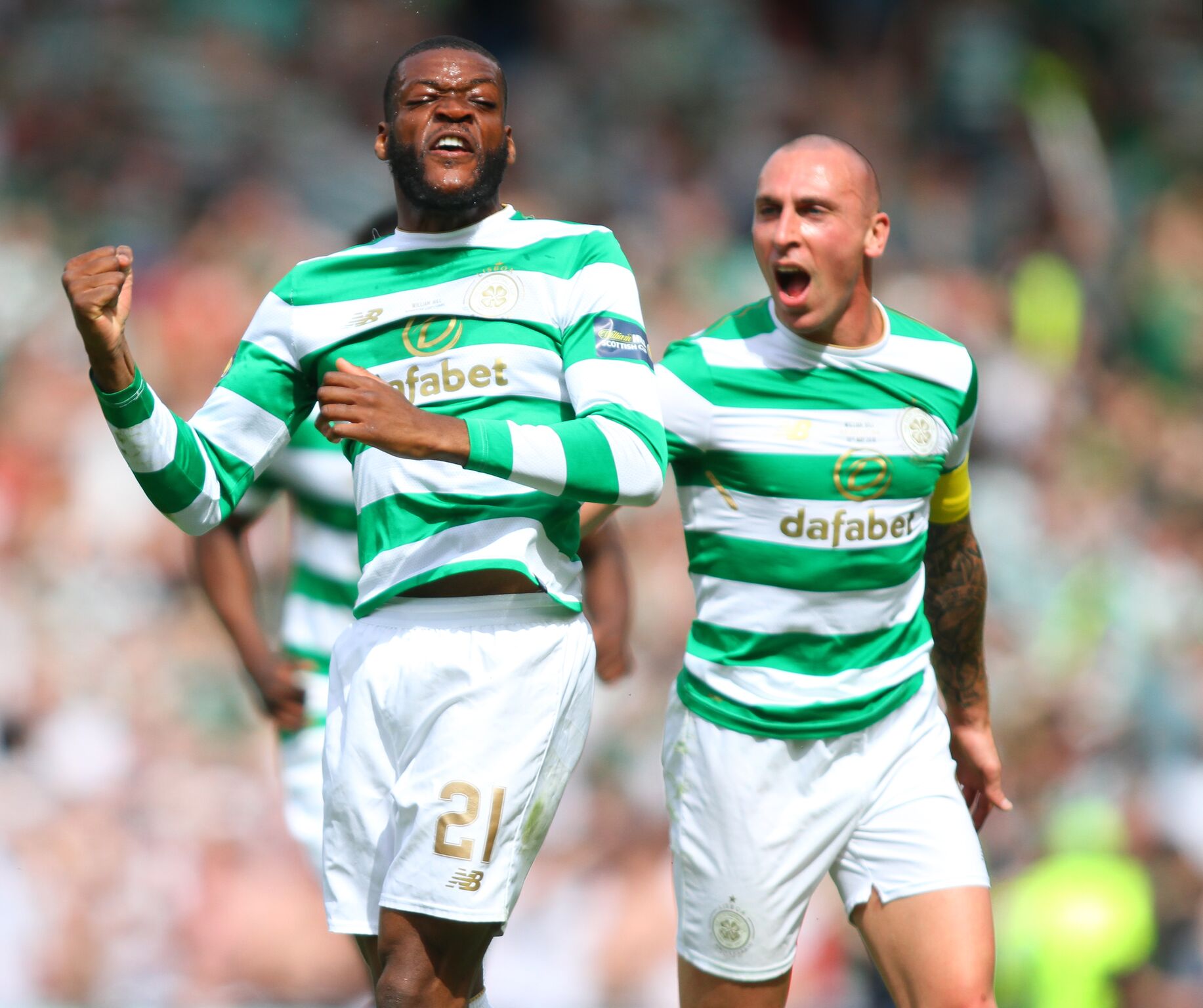
Sunny collected six Scottish Cup medals, and ten Scottish League medals, and but for the First World War, this would have been a great deal more. Sunny was forced into retirement with a badly damaged knee in 1917, became a publican in his native Kilmarnock and died tragically in a motor bike accident at the age of 40 in 1922.
Two curious things about Sunny. Why did he not win more than 1 cap for Scotland? (I suppose we all have our theories for that one, although to be fair, Scotland had a great side at that time and competition was tough). More pertinently, why is his picture not hanging from the stands of Celtic Park? This omission should be rectified.
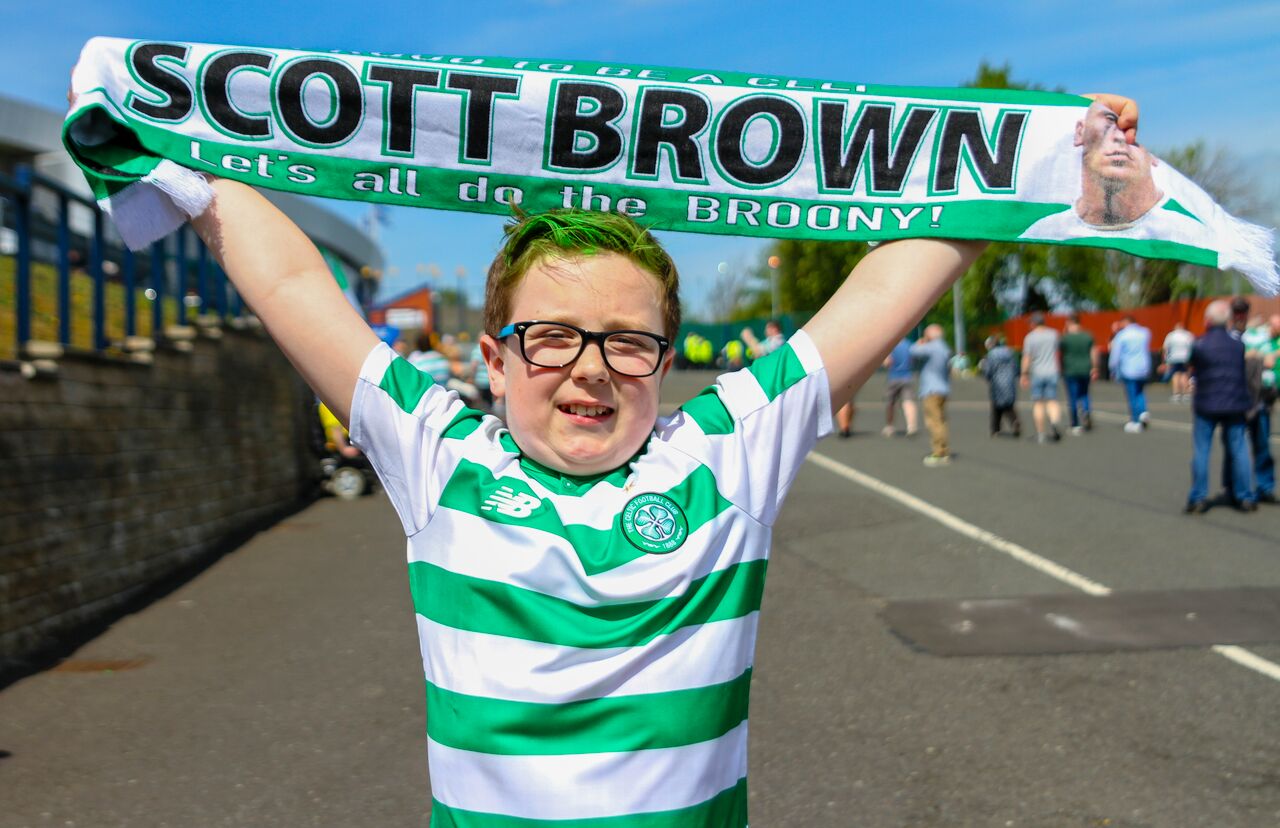
One sees the similarities with Broony. Hard, tough, determined, prepared to do anything for the club that he loved and the huge support who adored him.A huge heart, all of which belonged to the club he adored, and who adored him.
This weekend, I appreciate, is a special time for Scott Brown. I hope he feels flattered to be compared to Sunny Jim. In fact the comparison flatters the pair of them. They were and are great, great Celts.
David Potter
Have you got one of these? Beautiful Sunday should be celebrated all summer long…
The latest podcast is out now- it’s part 2 of the brilliant interview with Celtic’s SLO John Paul Taylor where he selects the games and the soundtracks of his own personal Celtic journey. Loved his memories of the 4-2 game in the first part of his interview. Here’s the latest instalment from the UK’s Football podcast of the year…
Listen to “John Paul Taylor with A Celtic State of Mind (Part 2/3)” on Spreaker.
